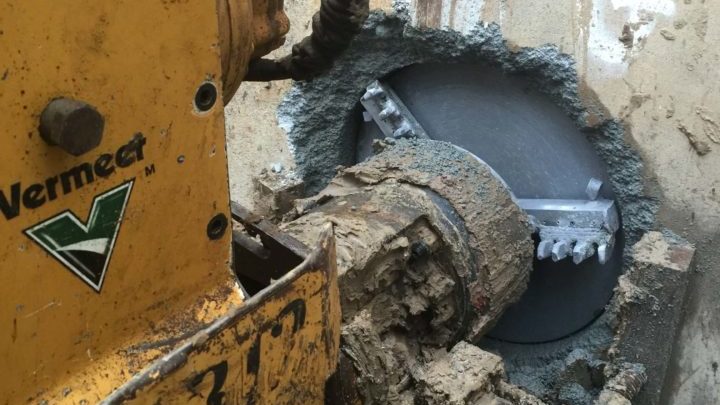Understanding ground conditions is key to getting a job done on time. The information a contractor has before starting a job is critical as geotech surveys do not always give the complete picture and once the drill starts it’s hard to – or impossible – turn back. This can cost clients time and money.
Edge Underground has been contracted to complete a number of jobs that have been passed onto them from previous contractors and asked to get them done within a fraction of the time. According to Edge Underground Managing Director Stuart Harrison there is an established pattern that gets contractors into trouble. The problem he said, is the lack of information from the very start of the project.
That is why Edge Underground always utilises a pilot line before starting the product installation. This ensures they have all the correct information from the start so they can complete the job quickly and efficiently.
The take over
Edge Underground was recently called in to take over a contractor who had been working at a site for about four weeks. They job required them to dig about nine metres deep in what had been specified as sandy clay. However, the geotech was wrong, an occurrence that is not uncommon Stuart said.
“The contractor before us was using a vacuum style machine. They’d been dropping their head, which on vacuum microtunnelling machines is not uncommon in wet ground,” Stuart said.
He said the previous contractor had attempted to do a jacked installation two times over the period of four weeks but was only able to get around ten metres before having to abort. Edge Underground went in and was able to do a 94-metre pilot shaft in three days.
Stuart said they were able to do this because they were using the AXIS Vermeer system.
“The AXIS machine is set up with a very different style of removing the spoils from the face, and we’ve got ways of managing the pressure to create pressure, and keep our line and grade in very flowing material,” Stuart said.
The pilot line told them the geotech was wrong. The ground condition was predominantly wet sand with clay bits, boulders as well as some cobble. Stuart said obtaining the correct information before starting the job was a key factor to knowing how to proceed with the job.
“The difficulty in sand is you’ve got limited time frame. So we learnt a lot on this first line,” Stuart said.
“The client had delayed the job so the pressure had built up. We got the line across, but we ended up having to use a steel encasement pipe that could handle the pressure. We then used a steel encasement pipe for the rest of the job as the client didn’t want to have a position where the job needed to be a recovery.”
When conditions change
Once the client had been given the correct information they changed the specification of the job, requesting they insert a heavy wall casing pipe.
Edge Underground used the AXIS Vermeer system to install about 600 metres of pipe at a depth of eight to ten meters in changing ground conditions.
“It was an extremely challenging job. The big advantage we have with AXIS is that AXIS is such a good performer across all ground, that we can set it up to suit whatever the ground condition is. This gives us the ability to determine a better setup for the machine to ensure that the installation’s done effectively and efficiently,” Stuart said.
Independent expert advice
Stuart said the benefit of the pilot line is that Edge Underground can provide the client will the correct information about changes in the ground conditions and how that will impact on costs and the time it takes to complete a job. It also informs them of the correct methodology for the job. Stuart said Edge Underground is not limited to one trenchless methodology and is able to offer clients expert advice on the best method for their needs.
“There are lots of machines out there that have fantastic capabilities, but often within a certain range of ground conditions,” Stuart said.
“The reality is you’re better off having all the information of the prevailing ground conditions and allowing us to do the work correctly up front, rather than doing half do a job and realising there are problems still and having to then go back and re-work parts of the job.”

